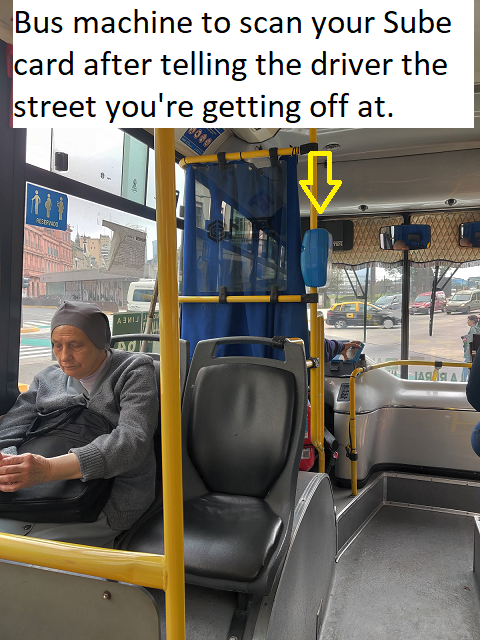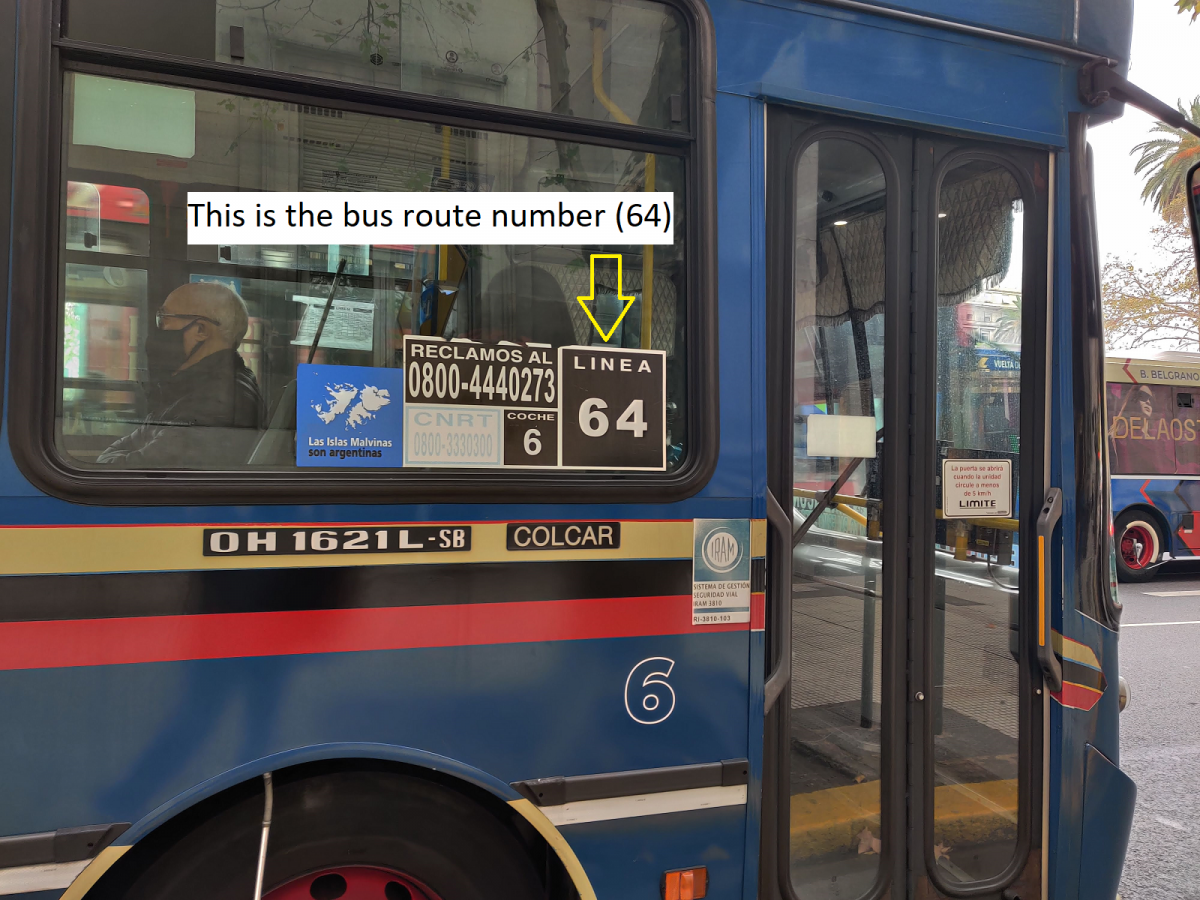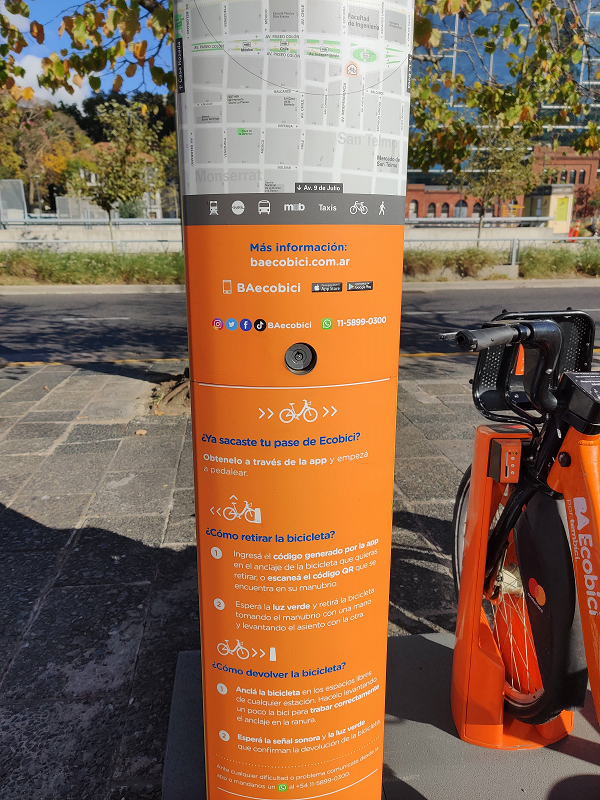 Local buses and Subway
Local buses and Subway
To ride a local bus or the subway you need to purchase a plastic Sube card. (pronounced like the English words "sue" and "bay" combined). As of June 2024, it seems that only a few subway stations sell the card. We had luck buying one at the Lima subway station, but where told the Cathedral subway station may have them as well. The cards are sold empty (no value), so you'll need to add value right away. As of June 2024, the cost of the card (empty) was about 900 pesos. You can use the card for more than one person on the same trip. (So if you're always traveling with a friend, you don't each need your own card.) We have detailed information here about how to add money to a Sube card.
A number of Kioskos have a machine for reloading the Sube card with credit. (Kiosko shops with gum, candy, drinks, cigarettes, and are all over the city.)They don't necessarily also sell the card. (They may even have a sign that says "Sube" out front. You set your card on the pad on the machine, and work your way through the menus to add value. The menu is ONLY in Spanish. The machine I was on only accepted 100, 200, 500 peso notes, nothing larger. I selected the amount and fed in the note, and that was it. Then I removed my card from the pad. Many rides are 300-350 pesos (as of June 2024). Many Kioskos have a pad to set your card on by the check out counter, and you tell the person working there how much you need to add and pay them directly. That is likely easier than using a self-service machine if you find one.
To ride, look up your location and desired destination on Google Maps, to learn what bus you need. Google Maps is pretty reliable. Then you get on a bus, tell the driver the name of the street you will be exiting at ("Las Heras" for example) and tap your card flat at the machine in the bus. The driver will set it to charge your card the right amount. The screen will also tell you how much value you have left on the card. If you have to transfer to a new bus, you must tap your card each time you get on a new bus. Between transfer stations on the subway, you likely can get to the other platform without exiting the station, which means you won't have to pay again. The same card can be used for subway and the bus. As of June 2024, the cost of the card (empty) was about 900 pesos.
 People usually line up at bus stops. It's polite and orderly. If you are at a busy stop where multiple buses come, look carefully at the bus to see which bus it is. (I noticed some buses seemed to have 3 different, huge numbers on them and I wasn't sure which I should look at.) As you're entering the bus, on the left side of the doors, bus exterior, there will be a black and white/silver large sticker with the bus route number. Look at this to verify that you're getting on the correct bus that you need.
People usually line up at bus stops. It's polite and orderly. If you are at a busy stop where multiple buses come, look carefully at the bus to see which bus it is. (I noticed some buses seemed to have 3 different, huge numbers on them and I wasn't sure which I should look at.) As you're entering the bus, on the left side of the doors, bus exterior, there will be a black and white/silver large sticker with the bus route number. Look at this to verify that you're getting on the correct bus that you need.
The buses and subway are reliable, but don't necessarily follow an exact, minute by minute schedule. So the next bus may be 5-10 minutes off from when you expect it. Large bus stops (like on Colon) have a sign with approximate times, and which bus is coming next.
 You can find bus and subway (subte) maps online. I found that to figure out the route and bus number I needed, Google Maps is quite accurate. (I got on the wrong bus before I figured out which bus number I should be looking at, so I just looked at my location on Google Maps to see what direction I was going, saw where there were many bus stops, got off there, then got on a different bus to get me where I needed to go. Saw a cool part of the city too!) The bus rides are about 40 cents ($.40 USD) so it's not an expensive mistake to get on the wrong bus, and you can get anywhere. I'm a big fan of the bus system.
You can find bus and subway (subte) maps online. I found that to figure out the route and bus number I needed, Google Maps is quite accurate. (I got on the wrong bus before I figured out which bus number I should be looking at, so I just looked at my location on Google Maps to see what direction I was going, saw where there were many bus stops, got off there, then got on a different bus to get me where I needed to go. Saw a cool part of the city too!) The bus rides are about 40 cents ($.40 USD) so it's not an expensive mistake to get on the wrong bus, and you can get anywhere. I'm a big fan of the bus system.
The subway (subte) system is great too (and predictable/easy to use if you've ever ridden the subway in another city), but fewer stops so you'll likely do a little more walking on either end of your trip. Have your card with you, scan it on the turnstile/entry gate to walk through. Go the the train platform you need by looking at the name of the last stop on the train line, in the direction you need to go. Time until the next train arrival will appear on the electronic sign on the train platform. You can count the number of stops you need, or look for the name of the stop as you enter each station. Scan your card again upon exit.
Bicycles
Bicycle lanes are plentiful and bikes are available for rental on the street. (You can't check one out for the whole day, it's intended as transportation as point A to point B. Use the app, load on the money, then scan the qr code to check out a bike. app tells you where other bike return stands are, and how many bikes are there.) There is a bike rental location very close outside of the UCA conference building.
Taxis/Uber/Cabify
Taxis are plentiful, you can probably find one driving around.
I like the idea of an app and knowing if a taxi is charging me the regular or "tourist" price. Cabify was recommended to me, as you can opt to pay in cash if you prefer, but I had difficultly with it (it asked me for an Argentinian ID number that I don't have, so I was stuck. I've seen others from North America have the same issue, so waving down a taxi is what I've been doing).
Uber may be more expensive, but you can call one on the app. Here are some other taxi/app tips. Selecting to pay with cash will likely get you a ride more reliably and be less expensive than using your card.
Plotting your desired destination in Google Maps and showing it to your Taxi/Car driver may be helpful if your Spanish is limited.
Airport Transfer
A private care hire or taxi/uber are your most convenient and fastest. They will cost $35-$45 USD most likely. When traffic is good, this is a 30 minute trip from EZE airport to downtown.
There are other shuttle services, or even public buses, but you will wait for others, and make multiple stops. This is one shuttle company. These are viable options and you'll need to weigh the costs/benefits in terms of time and money. (They note that the public bus can take up to 2 hours on a busy day.)
Something else to keep in mind, if you don't use a private car and instead hail a taxi/uber to return to the airport. There is a tollroad and a mandatory airport surcharge added to the taxi fare. Also, if it's rush hour they charge more because the 30 minute ride can instead take 70+ minutes. (I left for the airport at about 5:00pm on a Friday. The road to the airport is the same road everyone else in Buenos Aires takes to get out of town for the weekend, so it can be truly slow. Getting into town in the morning was pretty quick.) I mention all of this only so that you can plan ahead, and so that you're not surprised by a taxi fare that may seem higher than you expected.
Additional, detailed airport transfer information is available here.
(Info according to a May 2023 trip to Argentina by Emily Rodrigues, from North America.)
Do you have any corrections or additions to add to this information? If so, please email ACBS or post it as a comment below and we'll do our best to incorporate the most up to date and accurate information.
